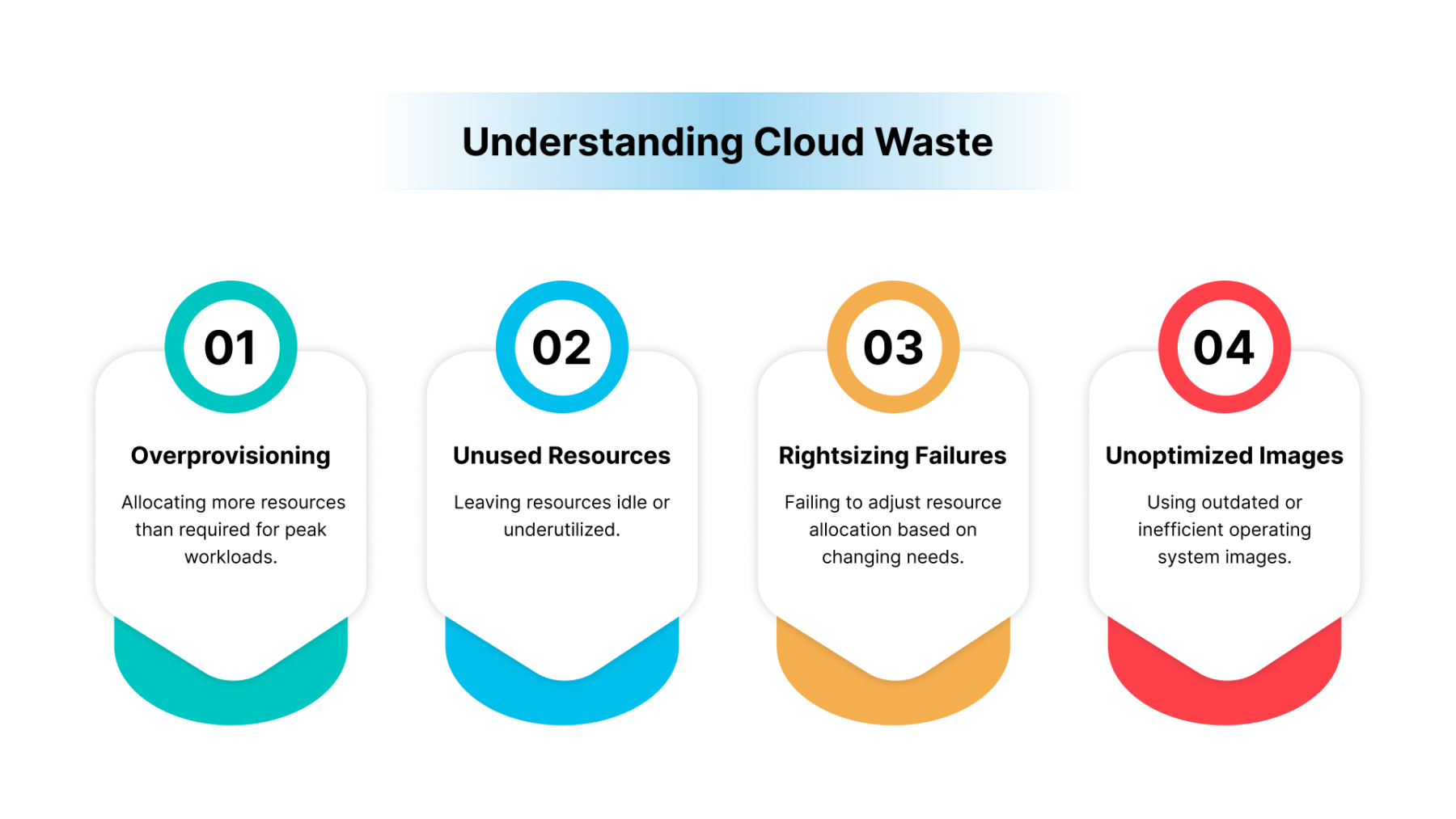Cloud computing has revolutionized the way businesses operate, offering unparalleled flexibility, scalability, and cost-effectiveness. However, the potential for cloud waste is a significant concern. Overprovisioning cloud resources can lead to increased costs, environmental impact, and suboptimal performance. This blog explores strategies to combat cloud waste and optimize resource utilization.
Understanding Cloud Waste
Cloud waste occurs when organizations allocate more resources than necessary to run their applications. This can lead to underutilized resources, increased costs, and inefficient resource allocation. Common forms of cloud waste include:
-
Overprovisioning: Allocating more resources than required for peak workloads.
-
Unused Resources: Leaving resources idle or underutilized.
-
Rightsizing Failures: Failing to adjust resource allocation based on changing needs.
-
Unoptimized Images: Using outdated or inefficient operating system images.
A study by Flexera found that organizations waste an average of 30% of their cloud spending due to unused resources.
Strategies to Avoid Cloud Waste
-
Rightsizing:
-
Monitor Resource Utilization: Continuously track CPU, memory, storage, and network usage.
-
Identify Idle Resources: Identify resources that are consistently underutilized.
-
Adjust Resource Allocation: Reduce resource allocation for underutilized components.
-
Utilize Auto-Scaling: Configure auto-scaling policies to automatically adjust resources based on demand.
-
Cost Optimization:
-
Utilize Reserved Instances: Consider reserved instances for predictable workloads to reduce costs.
-
Take Advantage of Spot Instances: Use spot instances for non-critical workloads to save costs.
-
Optimize Storage: Choose the appropriate storage type (e.g., block, object, file) based on usage patterns and cost considerations.
-
Leverage Cost Optimization Tools: Utilize cloud provider tools and third-party solutions to identify cost-saving opportunities.
-
Reservation Planning:
-
Forecast Resource Needs: Accurately predict future resource requirements.
-
Rightsize Reservations: Ensure reserved instances match actual usage patterns.
-
Utilize Reserved Instance Marketplace: Consider buying or selling reserved instances to optimize costs.
-
Tagging and Labeling:
-
Implement Tagging: Assign meaningful tags to resources for better organization and cost allocation.
-
Utilize Cost Allocation Tags: Track costs associated with specific projects or departments.
-
Continuous Monitoring and Optimization:
-
Monitor Resource Usage: Regularly review resource utilization metrics.
-
Identify Inefficiencies: Identify areas where resources can be optimized.
-
Implement Optimization Strategies: Implement strategies to reduce waste and improve cost-efficiency.
Tools and Technologies for Cloud Waste Management
-
Cloud Provider Tools: Most cloud providers offer built-in tools for cost analysis, resource optimization, and rightsizing.
-
Third-Party Tools: Tools like CloudCheckr, CloudHealth, and Cloudability provide advanced analytics and recommendations.
-
Machine Learning and AI: Leverage AI-powered tools to identify patterns and optimize resource allocation.
Real-World Examples of Cloud Waste Reduction
-
Netflix: Netflix optimized its cloud infrastructure by using machine learning to predict resource needs and automate scaling.
-
Airbnb: Airbnb implemented a serverless architecture to reduce idle capacity and improve cost-efficiency.
-
Spotify: Spotify leveraged AI to optimize its content delivery network (CDN) and reduce costs.
Conclusion
Combating cloud waste is essential for optimizing cloud costs and ensuring efficient resource utilization. By implementing the strategies outlined in this blog, organizations can significantly reduce unnecessary spending and improve their cloud infrastructure's overall efficiency.



